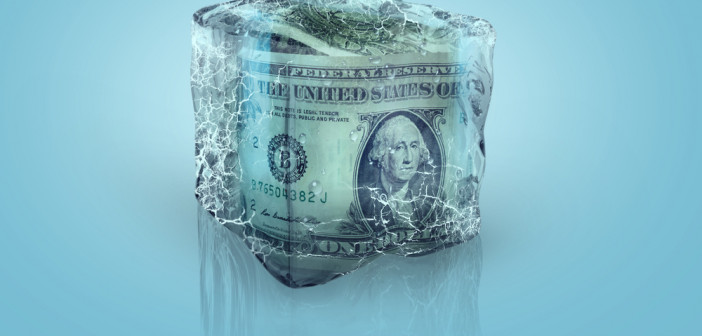US annual inflation slowed to 3% last month, according to the latest Consumer Price Index released Wednesday by the Bureau of Labor Statistics.
That’s a sharp cooldown from June of last year, when surging energy costs helped inflation spike to 9.1% — the fastest annual rate since November 1981, when Olivia Newton-John’s “Physical” sweated its way to the top of the charts.
Inflation, as measured by the CPI, has now eased for 12 consecutive months and is at its lowest rate since March 2021.
What this means for consumers
The latest data outlines a welcome trajectory for shoppers who have seen their purchasing power and monthly budgets eroded by persistently high and pervasive price increases for the last two years.
“We don’t have to worry quite as much as we were about rising prices,” William Ferguson, economics professor at Grinnell College in Iowa, told CNN.
The June annual rate is down from 4% in May and landed slightly below economists’ expectations for a 3.1% increase, according to Refinitiv.
On a monthly basis, prices increased by 0.2%, a cooler reading than the 0.4% increase seen in May, according to the report.
Gas prices picked up 1% from May but are down nearly 27% from a year ago. Food prices and grocery store prices are up 5.7% and 4.7%, respectively, for the 12 months ended in June. However, eating out remains costlier: Food away from home inflation is up 7.7% year over year, according to the report.
“That’s Bidenomics in action,” President Joe Biden said Wednesday. “Today’s report brings new and encouraging evidence that inflation is falling while our economy remains strong.”
What this means for the Fed
While underlying inflation cooled as well — the core CPI index moderated to 4.8% for the 12 months ended in June and slowed to 0.2% monthly — the progress might not be enough to deter the Federal Reserve from raising rates when it meets later this month.
“The [Federal Reserve’s] fight against inflation is working,” Sung Won Sohn, professor of finance and economics at Loyola Marymount University and chief economist at SS Economics. “But that 4.8% core rate is still much too high, and the Fed has more work to do.”
The Fed has a 2% target for inflation, as measured by the annual change in the Personal Consumption Expenditures price index, a separate and more comprehensive gauge of price shifts. The PCE index measured 3.8% for the 12 months ended in May. Core PCE, excluding food and energy, was 4.6%.
Starting in March 2022, the central bank rolled out 10 consecutive interest rate hikes to tame inflation, finally hitting pause last month. The Fed is widely expected to raise rates by another quarter point when it meets later this month.
Progress toward pre-pandemic norms
June’s CPI reading is just a touch above the 2.9% average level of inflation seen in the two decades prior to the global financial crisis, according to Lael Brainard, director of the National Economic Council.
“The economy is defying predictions that inflation would not fall absent significant job destruction,” Brainard said Wednesday in prepared remarks at the Economic Club of New York.
In June, the US economy added 209,000 jobs and the unemployment rate was 3.6%, the BLS reported last week. The monthly job gains represent a significant slowing from the breakneck pace of employment growth seen during the recovery from the pandemic; however, the current labor market is outpacing what was seen in and prior to February 2020.
While wage gains have been propped up as the inflation bogeyman by some economists, Brainard has frequently expressed concern about the effects of a “price-price spiral,” when companies hike prices beyond their cost increases in order to boost profits.
A recent report from the Kansas City Fed found that nearly 60% of US inflation in 2021 (the year prices really began to surge) was because of an increase in corporate profits. In previous years, corporate profits contributed to about a third of price growth.
“It will be important for corporations to continue to bring their markups back down after having raised them to unusually elevated levels over the past two years, which would help in reducing inflation,” Brainard said. “The markups associated with price-price spirals — with final goods prices going up by more than input prices — should unwind if customers become more price-sensitive and firms compete more intensely for customers.”
Getting inflation unstuck
Although the stark disinflation seen in the headline rate is refreshing, the devil remains in the details.
The annual CPI rate is, in part, benefiting from base effects, when comparisons are made to the prior year. And June of last year was monumental: Annual inflation soared to 9.1%, the highest in more than 40 years largely because of record-high energy costs.
So the Fed and economists have been keyed in on what’s happening with core inflation, particularly core services. Since labor costs are more heavily weighted in services businesses than those who deal in goods, the tight employment market and above-average (but, until recently, below-inflation) wage gains have a greater chance of keeping higher prices sticky.
Prices for services excluding energy rose just 0.3% in June, the lowest monthly uptick since September 2021. On an annual basis, that index eased to 6.2%, which is the lowest since August 2022.
And that’s expected to show some further cooling in the months ahead. The shelter component of CPI, which is the largest contributor to inflation (70% in June), also is a lagging indicator of rents, which have been on the decline.
Stripping out shelter, the core non-housing services index rose just 0.1% from the prior month.
“Many economists argue that the last mile of inflation reduction will be the hardest, but that isn’t necessarily the case,” Julia Pollak, chief economist for ZipRecruiter, wrote in commentary issued Wednesday. “Producer prices are falling outright, inflation expectations are coming down, average weekly earnings have only risen 3.75% over the year (which is roughly consistent with 2% inflation), and aggregate labor income (the wages of all workers in the economy) is now growing more slowly than before the pandemic.”
While a rate hike is practically set in stone, this report, plus other economic data and the fact that monetary policy works on its own lag — anywhere from six months to two years — should instead force the Fed to keep its finger on the pause button, Sohn said.
“They’ve done enough,” he said. “They’re making good progress, so let’s wait and see. We don’t need any more hikes now.”




